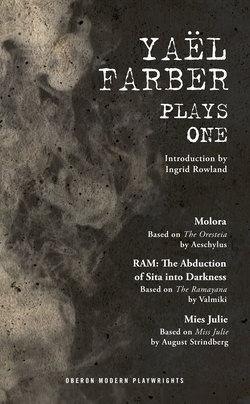Читать книгу Farber Plays One - Yaël Farber - Страница 15
На сайте Литреса книга снята с продажи.
Оглавлениеmise en scène
This work should never be played on a raised stage behind a proscenium arch, but on the floor to a raked audience. If being presented in a traditional theatre, the audience should be seated on stage with the action, preferably with all drapes and theatre curtains stripped from the stage and the audience in front of, left and right of the performance. Contact with the audience must be immediate and dynamic, with the audience complicit – experiencing the story as witnesses or participants in the room, rather than as voyeurs excluded from yet looking in on the world of the story.
The ideal venue is a bare hall or room – much like the drab, simple venues in which most of the testimonies were heard during the course of South Africa’s Truth and Reconciliation Commission: Two large, old tables – each with a chair – face one another on opposite ends of the playing space. Beneath Klytemnestra’s testimony table is a large bundle wrapped in black plastic. Upon each table is a microphone on a stand. Between these two tables is a low platform which demarcates the area in which the past / memory will be re-enacted. Centre of this platform is a grave filled with the red sand of Africa. Beside it lies an old pickaxe. Neither the grave nor murder weapon can be seen when the audience enters – as the platform is initially covered with a large industrial sheet of black plastic.
Along the back of the playing area, upstage and facing the audience, are seven empty, austere-looking chairs, upon which the CHORUS of WOMEN – who will come to hear the testimonies – will sit. The audience is seated in front of and around the performance area, as if incorporated into the testimonies. They are the community that provides the context to this event. Seated amongst audience members are the seven CHORUS members, as well as KLYTEMNESTRA and ELEKTRA.
